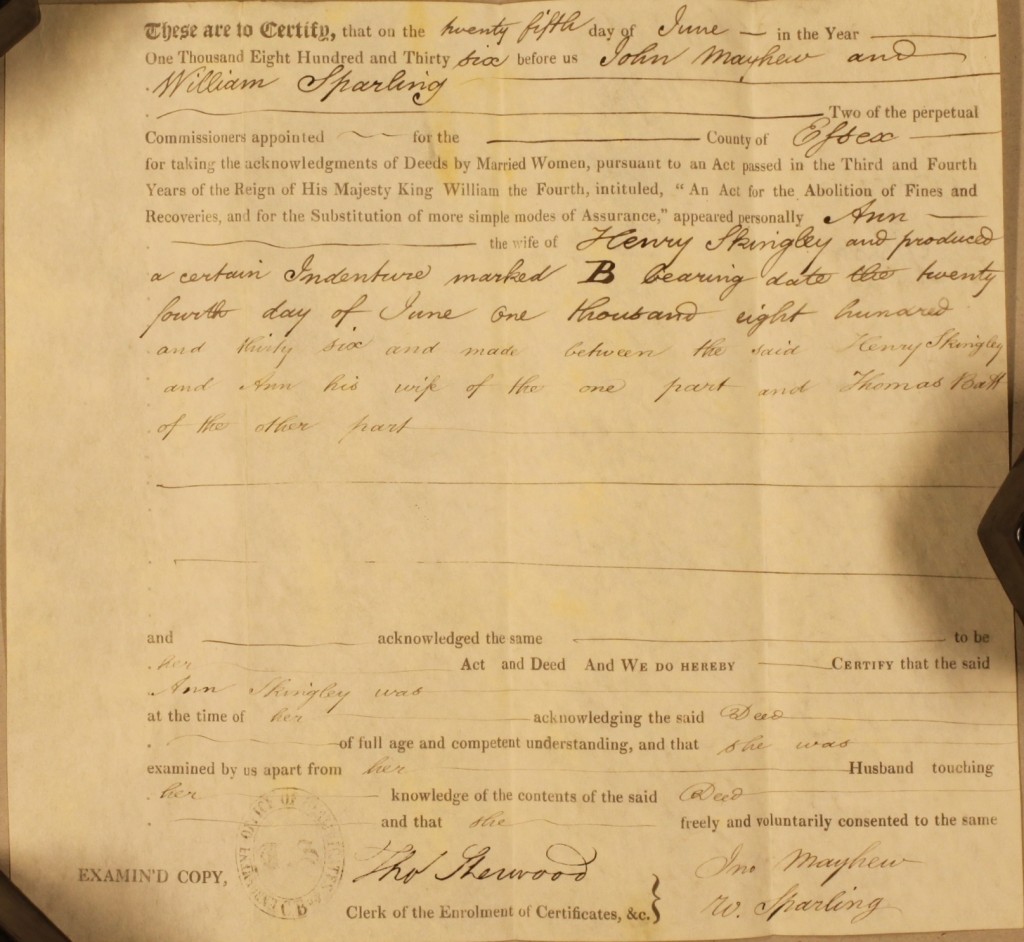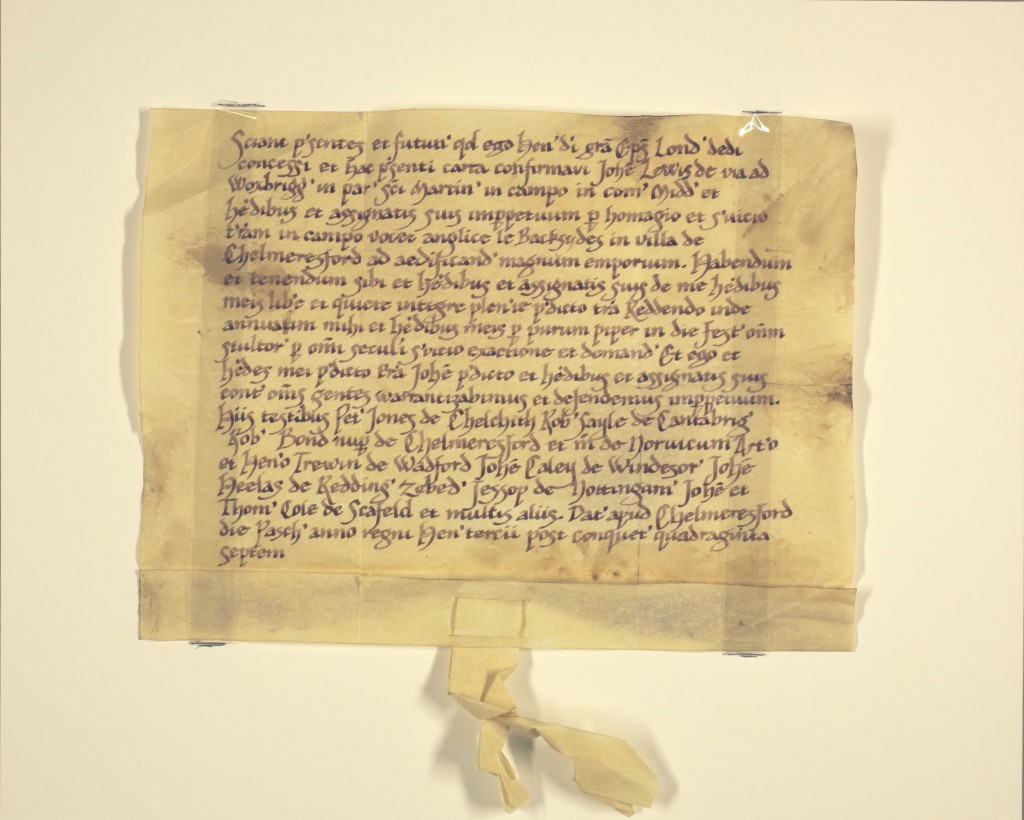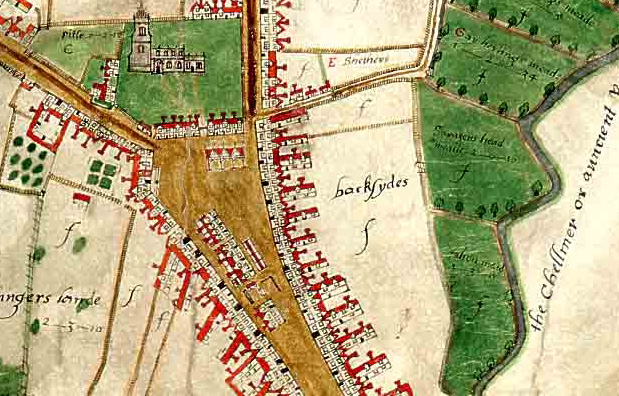Edward Harris, Archives Assistant, writes for us about a rare document which gives us an insight into Victorian married life…
One of the advantages of working in the Searchroom is that you often find interesting items from our collections passing through your hands. One document which caught our eye recently is this ‘Certificate of Acknowledgement of Deeds by Married Women’, something which we have only a few examples of (D/DC 27/680/A).

These are to Certify, that on the twenty fifth day of June in the Year One Thousand Eight Hundred and Thirty Six before us John Mayhew and William Sparling Two of the perpetual Commissioners appointed for the County of Essex for taking the acknowledgements of Deeds by Married Women, pursuant to an Act passed in the Third and Fourth Years of the Reign of His Majesty King William the Fourth, intituled, “An Act for the Abolition of Fines and Recoveries, and for the Substitution of more simple modes of Assurance,” appeared personally Ann the wife of Henry Skingley and produced a certain Indenture marked B bearing date the twenty fourth day of June one thousand eight hundred and thirty six and made between the said Henry Skingley and Ann his wife of the one part and Thomas Batt on the other part and acknowledged the same to be her Act and Deed And We do hereby certify that the said Ann Skingley was at the time of her acknowledging the said Deed of full age and competent understanding, and that she was examined by us apart from her Husband touching her knowledge of the contents of the said Deed and that she freely and voluntarily consented to the same. (D/DC 27/680/A)
These certificates, the earliest dating to 1833, are sometimes found attached to the deed to which they refer. They were created in a half attempt to right the centuries old wrong whereby on marriage all the property belonging to the wife became the property of the husband, meaning she effectively lost all control over its disposition or sale. Despite a common law requirement that she be a party to the deed of sale, it was generally held that the husband’s will always prevailed and abuses of that position were thought to be common.
In 1833 a clause in the Fines and Recoveries Act required that a woman selling property jointly with her husband would have to be interviewed separately by a public official, known as a commissioner, to certify that she was ‘of full age and competent understanding’, to confirm that she was not being forced into agreeing to the sale. The example above relates to the mortgaging of a property by Mr Henry Skingley and his wife Ann to one Thomas Batt. It was also noted on the original deed (D/DC 27/680) that this examination had taken place.

A note on the original deed that Ann Skingley had agreed to the mortgaging of the land which had belonged to her before her marriage (D/DC 27/680)
The Married Women’s Property Act of 1882 finally granted equal rights in property ownership to married women and simultaneously brought to an end the production of the certificates of Acknowledgement.
We have a small number of original certificates amidst our vast collection of deeds and lists of the commissioners for Essexcan be found in Q/RDm 3.




